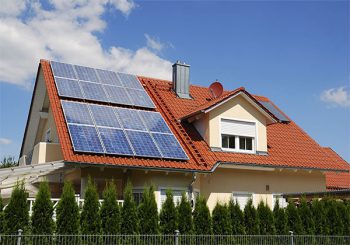By Jane Marsh
Guest Writer for Wake Up World
There are many benefits to switching to solar power, including reducing your carbon footprint and saving on expensive energy bills. However, the upfront cost of installing solar panels is still relatively high.
While solar costs have declined by 80% from 2010 to 2019, experts anticipate a 25% drop in industry growth in 2022 due to recent supply chain issues and increasing material prices.
Yet solar power may still be worth the investment. If you’re interested in installing solar panels, you may be wondering how much it’s going to cost you. Here are five factors that could impact the cost of installing solar panels in your home or business.
5 Cost Factors for Investing in Solar
Before installing solar panels, you should evaluate a few pricing elements of solar power that may vary the costs considerably. This article should help you decide if investing in switching to solar energy is right for you.
1. Panel Size and Quantity
The average American family uses approximately 11,000 kWh per year of electricity. This number equates needing about 26 to 33 solar panels to power the entire house. While a family of four may need only one solar panel to generate enough energy for a water heater, the sizing and quantity of solar panels are usually determined by other considerations, as well.
The best way to understand your solar needs is to consult with a solar installer. An installer can figure out how many solar panels you need based on the following:
- What you’ve paid for your past utility bills
- The amount of sunlight your home or business gets
- Accurate measurements and satellite images of your roof
An installer can use this information to recommend the correct size and quantity of solar panels to fit your energy needs.
2. Types of Solar Panels and Equipment
There are three types of solar panels: monocrystalline, polycrystalline, and thin-film. Each of the three types of solar panels has its advantages and disadvantages, but two are most commonly installed in homes: monocrystalline and polycrystalline.
Monocrystalline panels typically have the highest energy efficiency at 20%, while polycrystalline panels have energy efficiencies around 15-17%. Because of monocrystalline panels’ power capacity, they tend to help you save more over the long term and are pricier upfront to install.
Additional equipment you may need to buy includes power inverters, electrical wiring, charge controllers, mounts, and solar batteries.
3. Location
When considering the costs of installing solar panels, it’s essential to assess the geographical location of the home or business. Not every region receives the same solar irradiance — or amount of sunlight.
It shouldn’t come as a surprise that solar power tends to be more cost-effective in sunnier parts of the country. For example, California and Arizona are likely to have more sunlight hours every year than Connecticut. It’s also important to consider that your panels will produce more energy during the summer than in the winter.
The direction your home or business faces and shading from heavy tree coverage could also affect how much sun exposure your solar panels will have.
4. Incentives
State and federal governments have implemented various incentive programs to motivate homeowners to invest in solar. Currently, the federal government offers a 26% solar tax credit called an Investment Tax Credit (ITC) for solar panels installed between 2020 and 2022. It is expected to decrease to 23% in 2023 and may expire unless renewed in 2024.
Even if you live in colder climates like Pennsylvania, solar power can be a far more reliable energy source than electricity, particularly in terms of savings. Because solar power comes from sunlight, things like resource demands, natural disasters, and regulations aren’t a factor like the unpredictable rising electricity costs.
Other solar initiatives, such as GRID Alternatives Mid-Atlantic, provide free solar panel installations to low-income families. GRID aims to help bridge the economic divide and drive the transition to renewable energy resources. The average family spent about $115 per month on electricity bills in 2019, translating to about $1,380 annually. With the rising cost of utilities, programs like GRID offer low-income families an opportunity to save.
5. Installation Fees and Additional Costs
In the United States, the average cost of installing solar panels is around $25,000 before federal tax incentives and rebates. However, installation fees can range depending on the state you live in, the types of panels you use, and how big of a system you intend to install.
Keep in mind that solar panels are only a fraction of the cost, with equipment, operating costs, and labor making up the rest of the price tag.
Other factors that tie into solar installation costs include whether solar panels are available where you live, your current utility bill, shipping costs, and supply chain issues.
Solar: An Investment Worth Making
While the initial installation costs are high, the long-term savings of installing solar panels are attractive. If you plan to live in your home for a long time and are interested in significant savings on your energy bills, solar may be an investment worth considering.
About the author:
 Jane is the founder and editor-in-chief of Environment.co where she shares practical tips on how to live a greener life.
Jane is the founder and editor-in-chief of Environment.co where she shares practical tips on how to live a greener life.

If you've ever found value in our articles, we'd greatly appreciate your support by purchasing Mindful Meditation Techniques for Kids - A Practical Guide for Adults to Empower Kids with the Gift of Inner Peace and Resilience for Life.
In the spirit of mindfulness, we encourage you to choose the paperback version. Delve into its pages away from screen glare and notifications, allowing yourself to fully immerse in the transformative practices within. The physical book enriches the learning process and serves as a tangible commitment to mindfulness, easily shared among family and friends.
Over the past few years, Wake Up World has faced significant online censorship, impacting our financial ability to stay online. Instead of soliciting donations, we're exploring win-win solutions with our readers to remain financially viable. Moving into book publishing, we hope to secure ongoing funds to continue our mission. With over 8,500 articles published in the past 13 years, we are committed to keeping our content free and accessible to everyone, without resorting to a paywall.







